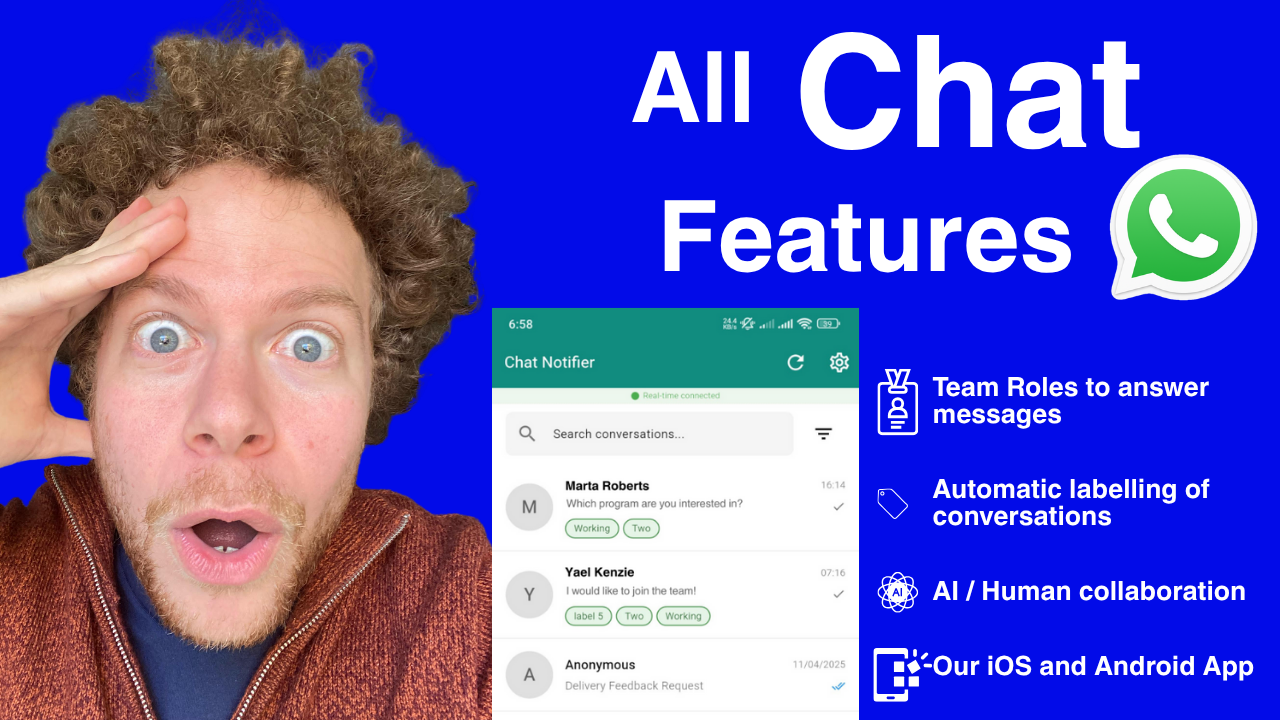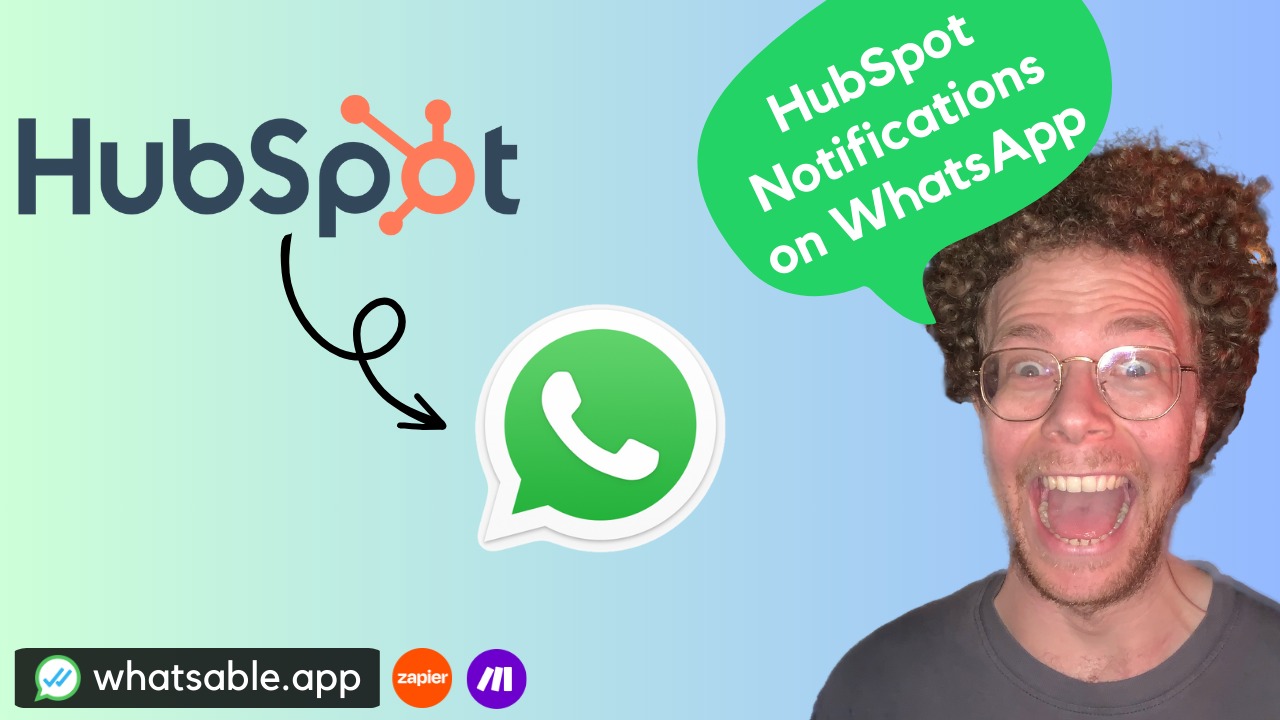Master the process of creating professional WhatsApp message templates that get approved by Facebook quickly and integrate seamlessly with your automation workflows.
WhatsApp message templates are essential for professional business messaging on the platform. Whether you're sending delivery notifications, marketing campaigns, or authentication codes, understanding how to create and submit templates through Facebook's approval system is crucial for any business looking to automate their WhatsApp communications.
This comprehensive guide will walk you through the entire process of creating WhatsApp message templates using Notifyer System, from initial setup to successful automation integration.
Understanding WhatsApp Message Templates
WhatsApp message templates are pre-approved message formats that businesses must use when initiating conversations with customers. These templates ensure compliance with WhatsApp's business policies while enabling personalized, professional communication at scale.
Key advantages of using WhatsApp templates:
- Guaranteed message delivery to customers who haven't contacted you first
- Enable automation at scale through WhatsApp Business Platform
- Maintain consistent branding across all customer communications
- Support rich media including images, videos, and documents
- Include interactive buttons for enhanced customer engagement
Template Categories and Pricing Structure
Selecting the correct category is critical for template approval. Facebook strictly enforces proper categorization, and incorrect selection will result in automatic rejection.
Authentication Templates
Purpose: Login codes, verification messages, security alertsCost: 4-5 cents per messageBest for: Two-factor authentication, password resets, account verification
Marketing Templates
Purpose: Promotional messages, special offers, product announcementsCost: 5-6 cents per messageBest for: Sales campaigns, new product launches, seasonal promotions
Utility Templates
Purpose: Order updates, delivery notifications, appointment remindersCost: 4-5 cents per messageBest for: Transactional communications, service updates, booking confirmations
Cost-saving advantage: After sending your first template message, you can exchange unlimited follow-up messages with that customer for 24 hours without additional charges, making WhatsApp templates highly cost-effective for customer service.
Complete Template Creation Process
Step 1: Verify WhatsApp Account Connection
Before creating templates, ensure your WhatsApp Business account is properly connected to Notifyer System. Your dashboard should display a connection confirmation message. If not connected, complete the account embedding process first.
Step 2: Initiate Template Creation
Access the template creation section in your Notifyer System dashboard and select "Create New Template" to begin the process.
Step 3: Set Template Name and Format
Create a template name following these specific requirements:
- Use only lowercase letters
- Replace spaces with hyphens
- Keep names descriptive but concise
- Professional example: "order-delivery-notification" or "appointment-reminder-service"
Step 4: Select Appropriate Category
Choose your category based on the primary purpose of your message:
For Authentication: Security codes, login verification, account alertsFor Marketing: Promotional content, special offers, product announcements
For Utility: Order status, delivery updates, appointment confirmations, service notifications
Critical note: Incorrect categorization is the primary reason for template rejection. Review your message content carefully before selecting a category.
Step 5: Configure Language Settings
Select the primary language for your template. For businesses serving multiple markets, create separate templates for each language to ensure optimal customer experience.
Step 6: Design Message Content
Templates support multiple content formats to enhance customer engagement:
Text-Only Messages:Focus on clear, professional communication that provides value to the recipient.
Messages with Media Headers:
- Images: Professional product photos, brand logos, or informational graphics
- Videos: Product demonstrations, tutorials, or promotional content
- Documents: Invoices, receipts, instruction manuals, or policy documents
Media Requirements:
- All media must be accessible via public URLs
- Images should be high-quality and relevant to your message
- Videos must be under 16MB in MP4 format
- Documents should be under 100MB in standard formats
Step 7: Craft Your Message Body
Write professional message content that serves your business objectives:
Professional delivery notification example:"Dear Valued Customer, your order has been dispatched and will arrive within the specified timeframe. We appreciate your business and remain available for any questions regarding your purchase."
Professional appointment reminder example:"This is a courtesy reminder about your upcoming appointment scheduled for tomorrow. Please arrive 15 minutes early to complete any necessary documentation. Contact us if you need to reschedule."
Step 8: Implement Variables for Personalization
Variables enable message customization while maintaining template compliance:
Variable Implementation:
- Add variables using the platform interface where personalization is needed
- Variables appear as numbered placeholders in your template
- Provide realistic example values for Facebook's review process
Professional variable usage:
- Customer names for personalized greeting
- Specific dates and times for accuracy
- Order or reference numbers for tracking
- Customized links for individual customer accounts
Step 9: Add Interactive Buttons
Interactive buttons significantly improve customer engagement and response rates:
Quick Reply Buttons:Enable customers to respond with predefined options such as "Confirm Delivery," "Request Callback," or "Schedule Reschedule."
Call Buttons:Provide direct access to your customer service team with properly formatted phone numbers including country codes.
URL Buttons:Direct customers to specific pages such as order tracking portals, appointment scheduling systems, or product information pages. URLs can be static or include dynamic variables for personalized experiences.
Button Strategy:
- Use clear, action-oriented text
- Limit button text to 20 characters maximum
- Test all URLs before template submission
- Consider the mobile user experience for optimal engagement
Step 10: Review and Submit Template
Before submission, conduct a thorough review:
Content Verification:
- Ensure all text is professional and error-free
- Verify variable examples are realistic and relevant
- Confirm all URLs and phone numbers are functional
- Double-check category selection accuracy
Compliance Check:
- Review WhatsApp Business Policy guidelines
- Ensure content provides genuine value to recipients
- Verify message aligns with selected category
- Confirm all media meets platform requirements
Submit your completed template for Facebook approval through the platform interface.
Step 11: Monitor Approval Process
Approval Timeline:
- Standard approval: 1-5 minutes for compliant templates
- Extended review: Up to 48 hours for complex or flagged content
- Rejection notice: Usually within 24 hours with specific feedback
Status Monitoring:Access the templates section in your dashboard to track approval status. Templates display as Pending, Approved, or Rejected with detailed feedback for any issues.
Step 12: Configure Automation Integration
Once approved, integrate your templates with automation platforms:
Zapier Integration Process:
- Create new automation workflow
- Install Notifyer System private application
- Configure "Send message with template" action
- Enter API credentials from your dashboard
- Select approved template from available options
- Map variables to dynamic data sources
- Test workflow thoroughly before activation
Make Integration Process:
- Install Notifyer System application in Make
- Select "Send WhatsApp Message with Template" action
- Establish connection using API credentials
- Configure template selection and variable mapping
- Design complete automation workflow
- Conduct comprehensive testing before going live
Step 13: Test Template Functionality
Pre-Launch Testing:
- Send test messages to your business phone number
- Verify variable substitution works correctly
- Test all interactive buttons on mobile devices
- Confirm message formatting displays properly
- Validate delivery and read receipt functionality
Performance Monitoring:After launch, track key metrics including delivery rates, customer response rates, and button engagement to optimize future templates.
Advanced Template Strategies
Optimizing for Higher Approval Rates
Content Best Practices:
- Use professional, customer-focused language
- Include your business name for brand recognition
- Provide clear value proposition in every message
- Avoid excessive promotional language in utility templates
- Maintain compliance with local business regulations
Variable Strategy:
- Implement customer names to increase engagement
- Include specific dates and times to reduce confusion
- Add order or reference numbers for easy tracking
- Use personalized links to improve customer experience
Multi-Template Workflows
Sequential Messaging:Design template sequences for complete customer journeys, such as order confirmation, shipping notification, delivery confirmation, and follow-up satisfaction survey.
Conditional Logic:Use automation platforms to send different templates based on customer behavior, purchase history, or geographic location for more targeted communication.
Integration with Business Systems
CRM Integration
Connect your template system with customer relationship management platforms to:
- Automatically send personalized messages based on customer data
- Track customer communication history
- Segment customers for targeted messaging campaigns
- Analyze communication effectiveness across customer segments
E-commerce Integration
For online retailers, integrate templates with:
- Order management systems for automated status updates
- Inventory management for stock notifications
- Customer service platforms for support ticket updates
- Marketing automation for promotional campaigns
Troubleshooting Common Issues
Template Rejection Solutions
Category Mismatch:Review your message content and ensure it aligns with the selected category. Promotional content requires Marketing category, while transactional updates use Utility category.
Policy Violations:Review WhatsApp Business Policy documentation and remove any prohibited content. Ensure compliance with advertising standards and customer privacy requirements.
Inadequate Variable Examples:Provide realistic, professional example values that accurately represent how variables will be used in live messages.
Technical Integration Issues
API Authentication Problems:
- Verify API key accuracy and active status
- Confirm account has sufficient messaging credits
- Check proper header formatting in API requests
- Ensure account permissions allow template access
Template Access Issues:
- Confirm template approval status before integration attempts
- Verify exact template name spelling in API calls
- Check template language matches integration request
- Ensure account has permission to access specific templates
Performance Optimization
Analytics and Metrics
Key Performance Indicators:
- Delivery Rate: Percentage of messages successfully delivered to recipients
- Read Rate: Percentage of delivered messages opened by customers
- Response Rate: Customer engagement and reply percentage
- Button Click Rate: Effectiveness of call-to-action buttons
- Conversion Rate: Percentage of recipients completing desired actions
Continuous Improvement
A/B Testing Strategies:
- Test different message lengths for optimal engagement
- Compare various call-to-action button texts
- Analyze optimal sending times for your audience
- Evaluate different personalization approaches
Template Iteration:Based on performance data, create improved versions of your templates to enhance customer engagement and business outcomes.
When to Consider Notifyer by WhatsAble
Consider Notifyer by WhatsAble if your business requires:
- Enterprise-Scale Messaging: Send unlimited messages from your branded WhatsApp Business API number with professional delivery infrastructure
- Team Collaboration Features: Provide multiple team members access to customer conversations with sophisticated role-based permissions and departmental organization
- Bulk Messaging Capabilities: Execute large-volume campaigns with intelligent delivery optimization that prevents blocking and maximizes engagement rates
- Advanced Analytics Dashboard: Access detailed reporting on message performance, customer engagement patterns, and return on investment tracking
- Mobile Application Access: Manage customer conversations on-the-go with dedicated iOS and Android applications featuring real-time notifications and offline support
- AI Chatbot Integration: Implement intelligent automated responses for initial customer interactions and frequently asked questions
Notifyer System provides enterprise-level infrastructure for businesses requiring professional WhatsApp communication at scale, complete with dedicated support and advanced feature sets.
Professional Support and Assistance
For technical assistance, template optimization guidance, or integration support, contact our expert team at team@whatsable.app.
Our specialists provide comprehensive support including:
- Template design consultation and optimization recommendations
- Integration troubleshooting and technical assistance
- Best practice guidance for maximum customer engagement
- Custom automation workflow development
- Advanced feature implementation and training
Conclusion
Successfully creating and implementing WhatsApp message templates requires attention to detail, compliance with platform policies, and strategic thinking about customer communication. By following this comprehensive guide, businesses can develop templates that achieve quick Facebook approval while driving meaningful customer engagement and supporting automation objectives.
Focus on providing genuine value through your communications, maintaining professional standards across all customer touchpoints, and continuously optimizing based on performance analytics. With proper implementation, WhatsApp templates become a powerful tool for customer relationship management and business growth.
Begin with simple utility templates for essential business communications, then expand to more sophisticated marketing and authentication templates as your expertise develops. The investment in properly structured WhatsApp messaging pays dividends through improved customer satisfaction, increased engagement rates, and streamlined business operations.
Ready to transform your customer communication? Start creating your first professional WhatsApp message template today and discover how automated messaging can enhance your customer relationships while improving operational efficiency.
This guide covers WhatsApp Business Platform message templates through Notifyer System. For the latest platform updates and advanced features, consult our technical documentation or contact our support specialists.

